Prior to Exchange Server 2010 Service Pack 1, errors in the database could be rectified using the ISINTEG tool. To do this, the database in question had to be offline. With Service Pack 1 for Exchange 2010, ISINTEG was replaced by a CMDlet in the Exchange Management Shell. The new CMDlet is called "New-MailboxRepairRequest"
and can be executed while the database is online. It is also possible to check only certain mailboxes in the database and correct errors. I describe how to do this in this article.
The following command is sufficient to check a database for errors:
New-MailboxRepairRequest -Database "Mailbox Database" -CorruptionType ProvisionedFolder,SearchFolder,AggregateCounts,Folderview -DetectOnly

The command checks the "Mailbox Database" database and all the mailboxes it contains for damage. The parameter -CorruptionType specifies which problems are to be searched for. The switch -DetectOnly indicates that errors are only logged, but no attempt is made to rectify the errors.
The following types can be used for the switch -CorruptionType must be specified:
SearchFolder = Check for damaged search folders
FolderView = Check views for folders that return incorrect content
AggregateCounts = Check for aggregated counter values for folders that display incorrect values
ProvisionedFolder = Check for shared folders that point to non-shared parent folders
If the parameter -DetectOnly Exchange attempts to rectify the errors found directly.
This command is sufficient to check only one mailbox for errors rather than the entire database:
New-MailboxRepairRequest -Mailbox Frank -CorruptionType ProvisionedFolder,SearchFolder,AggregateCounts,Folderview
To test the mailbox and archive, add -Archive:
New-MailboxRepairRequest -Mailbox Frank -CorruptionType ProvisionedFolder,SearchFolder,AggregateCounts,Folderview -Archive

Once the command has been sent, the check can only be canceled by taking the database offline. The results of the check are logged in the server's application event log. The events have the following event IDs:
10044
10045
10046
10047
10048
10049
10050
10051
10059
10062
Example:
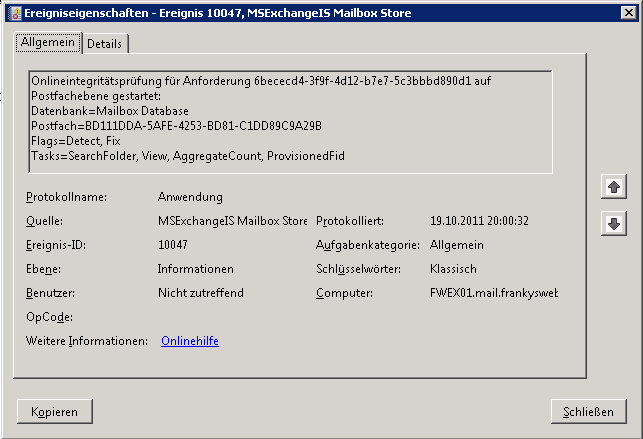
The application log can be filtered for the corresponding IDs, simply click on "Filter current log" in the action field and enter the ID
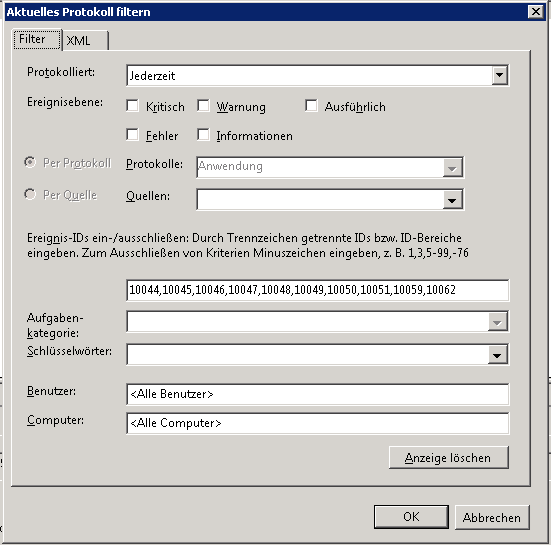


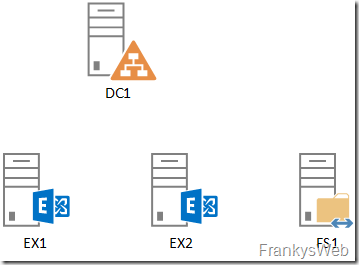
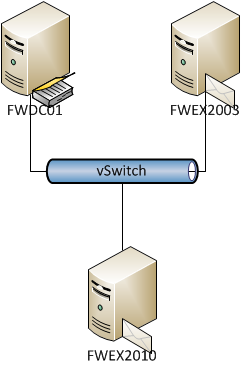

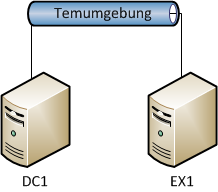
Vielen Dank für die Anleitung!
Allerdings kann ich so jetzt keine Ergebnisse rauslesen, ob jetzt was an der Datenbank kaputt ist/war oder nicht.
Wie sehe ich das denn in der Ereignisanzeige?
FYI:
ÜBERSICHT
Verwenden Sie das Cmdlet New-MailboxRepairRequest zum Ermitteln und Beheben von Postfachbeschädigungen. Sie können diesen Befehl für ein bestimmtes Postfach oder für eine Datenbank ausführen. Bei Ausführung dieser Aufgabe wird der Postfachzugriff nur für das zu reparierende Postfach unterbrochen.
Wenn Sie diesen Befehl für eine Datenbank ausführen, wird ebenfalls nur der Zugriff auf das zu reparierende Postfach unterbrochen. Alle anderen Postfächer in der Datenbank bleiben funktionsfähig.
Nach dem Start der Reparaturanforderung kann diese nur angehalten werden, wenn die Einbindung der Datenbank aufgehoben wird. Weitere Informationen finden Sie unter Aufheben der Einbindung einer Datenbank.
Hallo Franky,
Ist das unkritisch wenn man sich auf eine spezielle getrennte Mailbox bezieht und sie versucht zu reparieren ?
Kann man das wirklich im laufenden Betrieb machen ?
grüße fireskyer
Hallo,
Super Anleitung, wie immer!
Leider habe ich das Problem das sich ein Postfach nicht mal mehr zur Reparatur öffnen lässt!
Schon mal solch ein Problem gehabt?
Gruß
Toadie